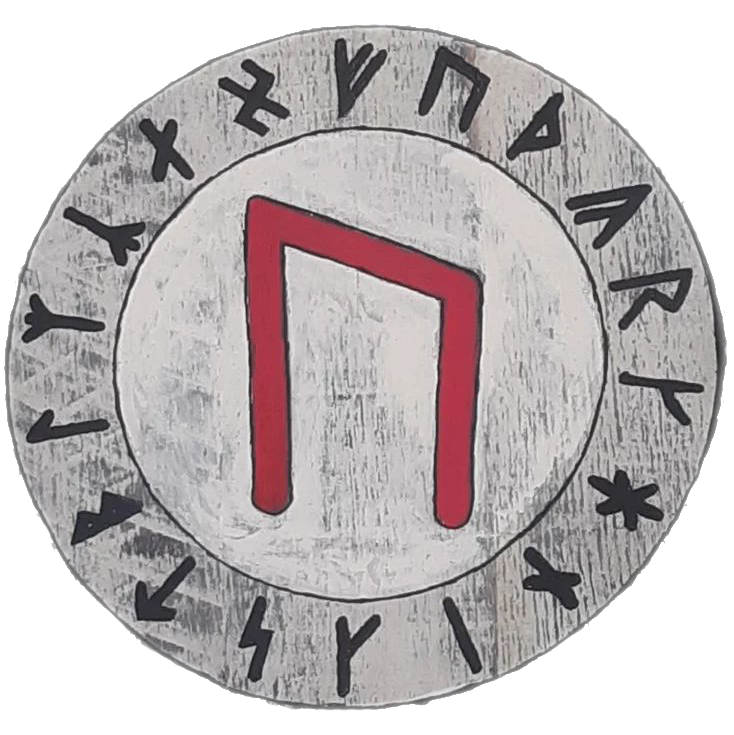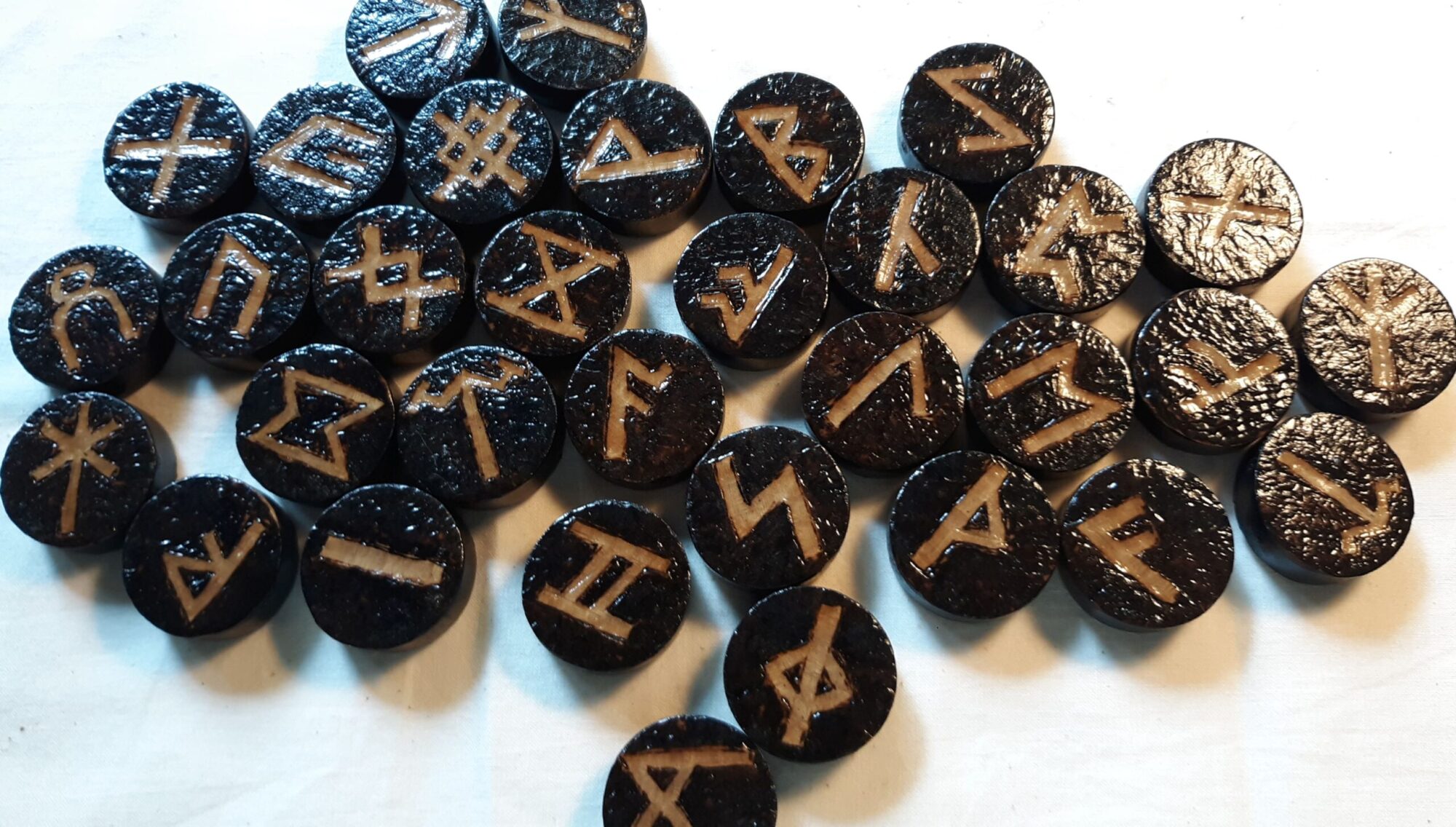Runes, like letters, stand for sounds, and writing poetry or other texts in runes is a fascinating and rewarding experience. The Anglo-Frisian Futhorc with its 33 runes relates best phonetically to modern English as it was derived from Old English, and thus English words are easiest to transliterate when using the Anglo-Frisian Futhorc.
As far as we are concerned, runes are neither wall decoration nor a conversation starter, but powerful tools in the toolbox. Operative runic texts focus the will of the runer by way of symbolism, energize it, direct it, and refine it, while at the same time concealing it in mysterious signs. The content of such texts (a poem, spell, or curse) transcends time because it resonates with ancient traditions in a natural manner, remembering that which was in its own form. Thus, patterns from of old emerge again, harmonizing the structure of reality with the runer’s will. Mysterious paradigms align.
Considering the potential power of runic texts, one should be careful in choosing the language for composing runic texts. If you feel that Old Icelandic is the only suitable language, blessed are you if you possess a solid knowledge of vocabulary, grammar and idiosyncrasies of Old Islandic! If this is not the case, it would be better to stick with a language that you are more familiar with, such as your mother tongue, and then choose the runic system that lends itself best to that language. For those composing in English, the Anglo-Frisian Futhorc is best suited.
The Anglo-Frisian Futhorc is best suited for languages derived from Old English.
“Anglo-Frisian Futhorc? Never heard of it,” you might say. That is indeed possible. Most people these days know the Elder Futhark and the Younger Futhark, both runic systems best suited to write in languages derived from Old Icelandic. The Anglo-Frisian Futhorc, sometimes referred to as “Anglo-Saxon”, is best suited for languages derived from Old English. See, the language of the old Frisii that lived along the north-western coast of modern-day Germany and the Netherlands is more closely related to that of their kinfolk, the Angles, who settled in the British Isles and who gave their name to our language. The Saxon ‘latecomers’ to the region on the Northern Sea coast spoke Old Germanic, not Old English, so their name does not serve as well for a label. “Anglo-Frisian” fits much better.

Now, to use runic symbols in writing texts, we transliterate sounds rather than letters. This is why a good knowledge of the language you are using is essential. Without a proper phonetic key, transliterating can go wrong easily, and you don’t want that to happen in spells or curses especially! The Anglo-Frisian Futhorc with its 33 runic symbols harmonizes best with modern English because it gives you all the sounds you need to make ancient tradition resonate in your runic texts, especially if you stick with words that have English roots (rather than Latin or Greek ones). Below is a key you can use, taken from Edred Thorsson’s book “ALU. An Advanced Guide to Operative Runology”, to which this article as a whole is indebted for inspiration as well as information:

From Edred Thorsson: “ALU. An Advanced Guide to Operative Runology”.
Knowledge of the runes revives the intellectual traditions of our people and provides a satisfying experience. Express yourself in symbols that used to be natural to your kinfolk and see where it takes you.

